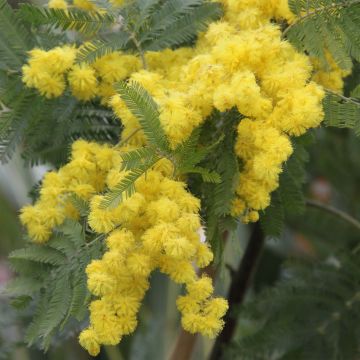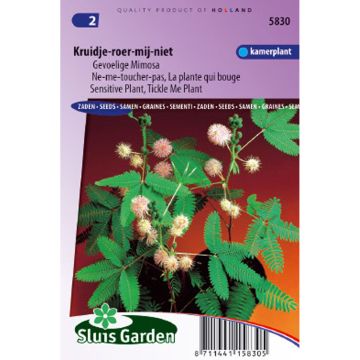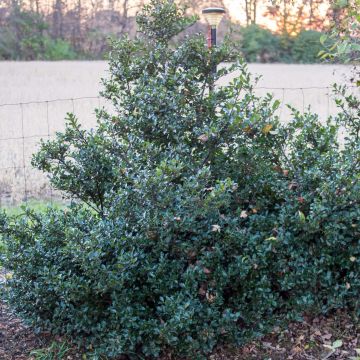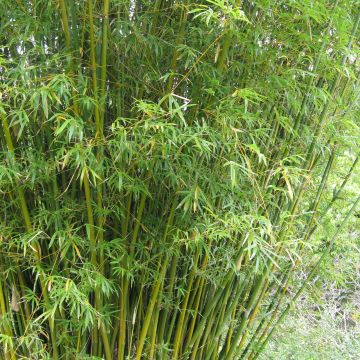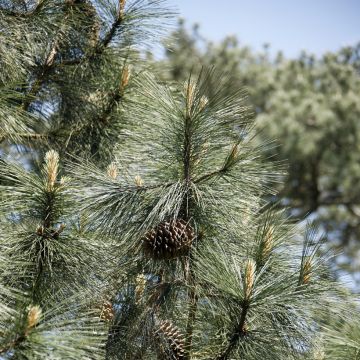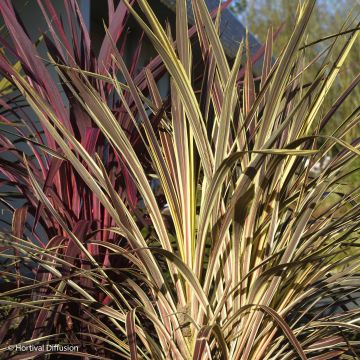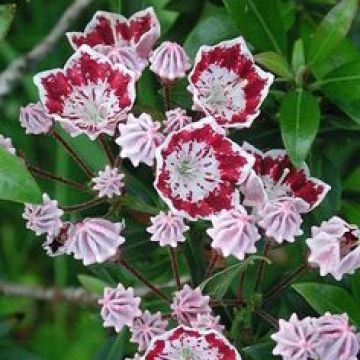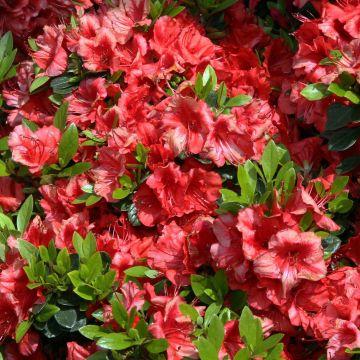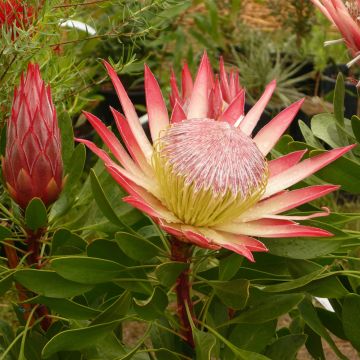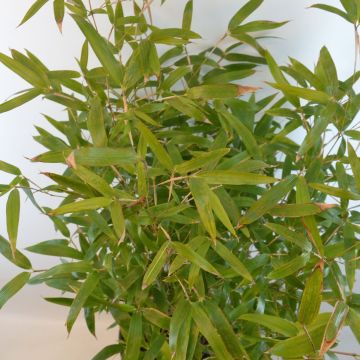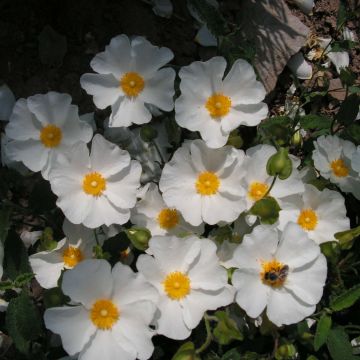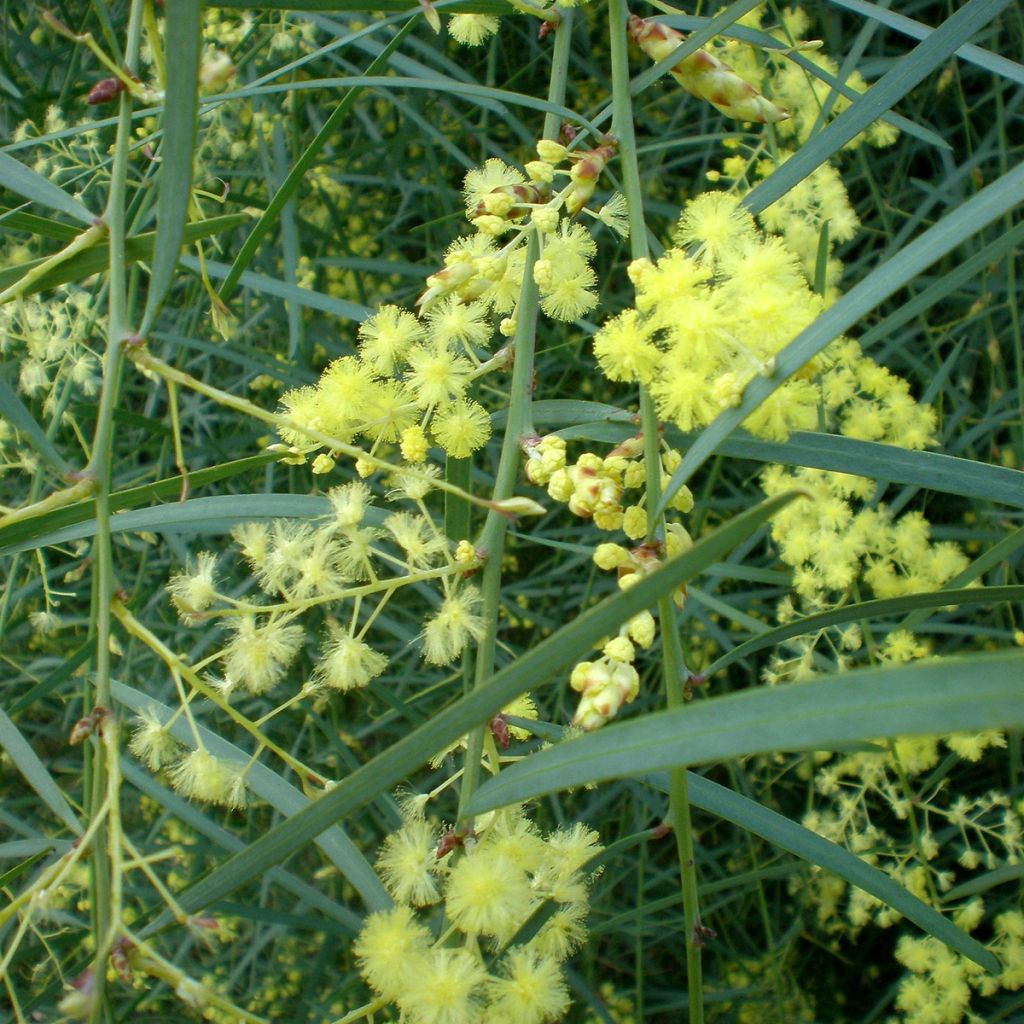

Acacia iteaphylla
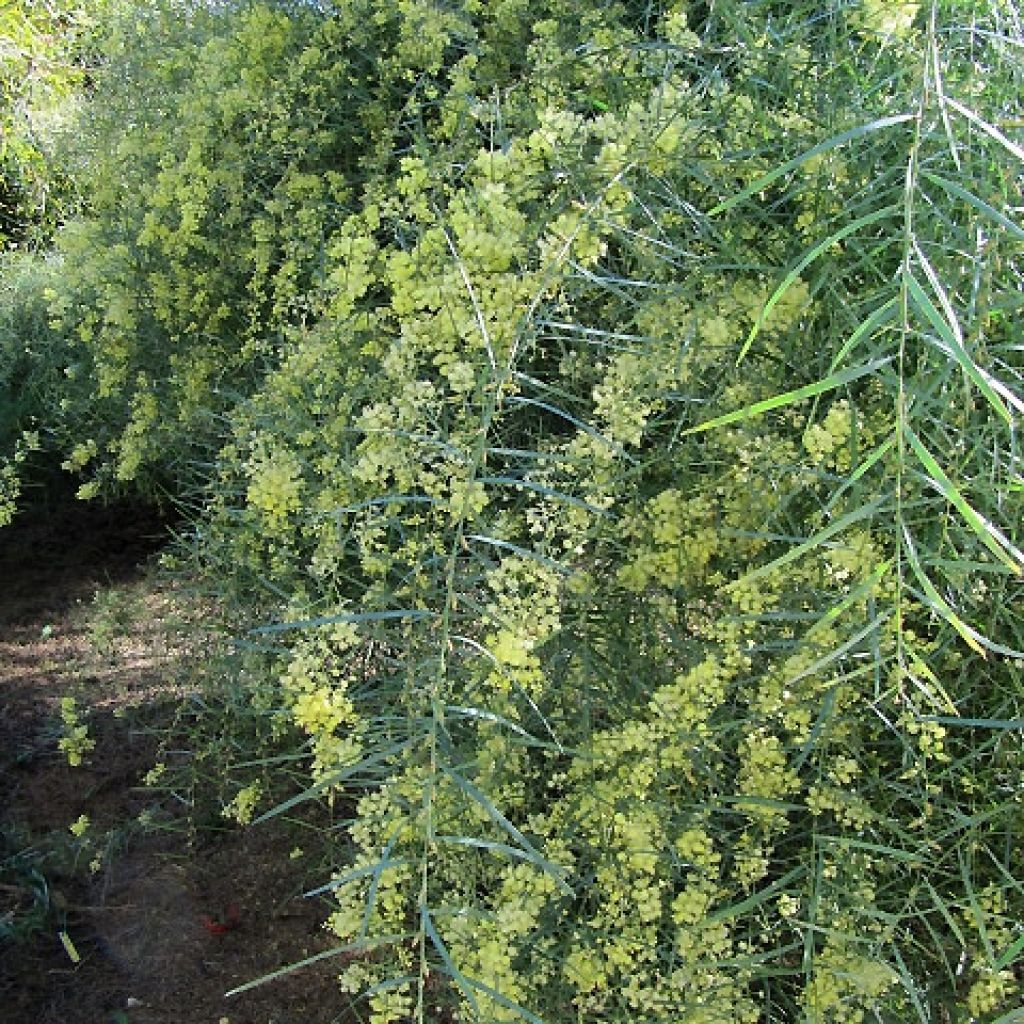

Acacia iteaphylla
Acacia iteaphylla
Acacia iteaphylla
Willow Leaf Mimosa
This plant carries a 24 months recovery warranty
More information
We guarantee the quality of our plants for a full growing cycle, and will replace at our expense any plant that fails to recover under normal climatic and planting conditions.
From €5.90 for pickup delivery and €6.90 for home delivery
Express home delivery from €8.90.
Delivery to Corse prohibited: UE law prohibits the import of this plant from mainland France to Corse as part of the fight against Xylella fastidiosa. Please accept our sincere apologies.
More information
Does this plant fit my garden?
Set up your Plantfit profile →
Description
Acacia iteaphylla, also known as Willow Leaf Mimosa, is an Australian species that is still not widely cultivated. It is interesting for its small size, its low soil requirements, and its abundant and fragrant light lemon-yellow flowering, which can last from autumn to winter, depending on the region. Not very hardy but perfectly drought-resistant, this dense and bushy plant is an excellent candidate for screening or filling out a hedge in a coastal garden. In colder climates, you can grow it in a large container to overwinter indoors in a bright, frost-free room.
Mimosas should not be confused with the tree we call acacia. They belong to the Fabaceae family, just like alfalfa and lupins. Acacia iteaphylla is native to Australia. It adapts to poor, shallow soils, even limestone, and also tolerates slightly clayey soils if they are not waterlogged. The hardiness of a mature specimen is estimated at -8°C (17.6°F) at its lowest point in dry soil. It can tolerate sea spray, but in a second line of defence.
This Willow Leaf Mimosa has a dense, bushy, somewhat untidy habit, with slightly pendulous branches. It reaches a height of about 3m (10ft) with a spread of 2.5 to 3m (8 to 10ft). Its growth is fast. The bark is smooth, ranging from brownish to reddish. The flowering period extends from October to February in mild climates, but it may be shorter or longer elsewhere. It appears on young plants aged 3 to 4 years. The flowers are generous clusters called racemes, born in the axils of the leaves. They are composed of numerous small pompom-like inflorescences called globose heads, pale lemon-yellow in colour, with vanilla and jasmine scents. The flower bud is protected by thin brown scales. After pollination, flattened pods of a glaucous colour form, containing several small seeds.
Its evergreen foliage consists of small narrow leaves called phyllodes, which are ovate-lanceolate or even linear in shape, measuring 5 to 14cm (2 to 6in) in length and 0.4 to 0.8cm (1in) in width. They are leathery and have a greenish-blue colour that becomes more silvery in summer due to heat and drought.
When planted in the ground, Acacia iteaphylla can be used as a hedge or in a shrub border. In favourable climates, it is often used to create an elegant green screen, either alone or in the company of Grevillea or oleanders, for example. It can be planted with other tender shrubs with an exotic appearance, such as Caesalpinia gilliesii, Sesbania punicea, escallonias, or Callistemons. To accompany its autumn to winter flowering, it can be paired with Teucrium fruticans 'Azureum' and Miscanthus 'Purple Fall', which are stunning late-season plants. It adapts well to potted cultivation, as long as it is protected from winter frosts in a minimally heated greenhouse or conservatory.
Report an error about the product description
Acacia iteaphylla in pictures


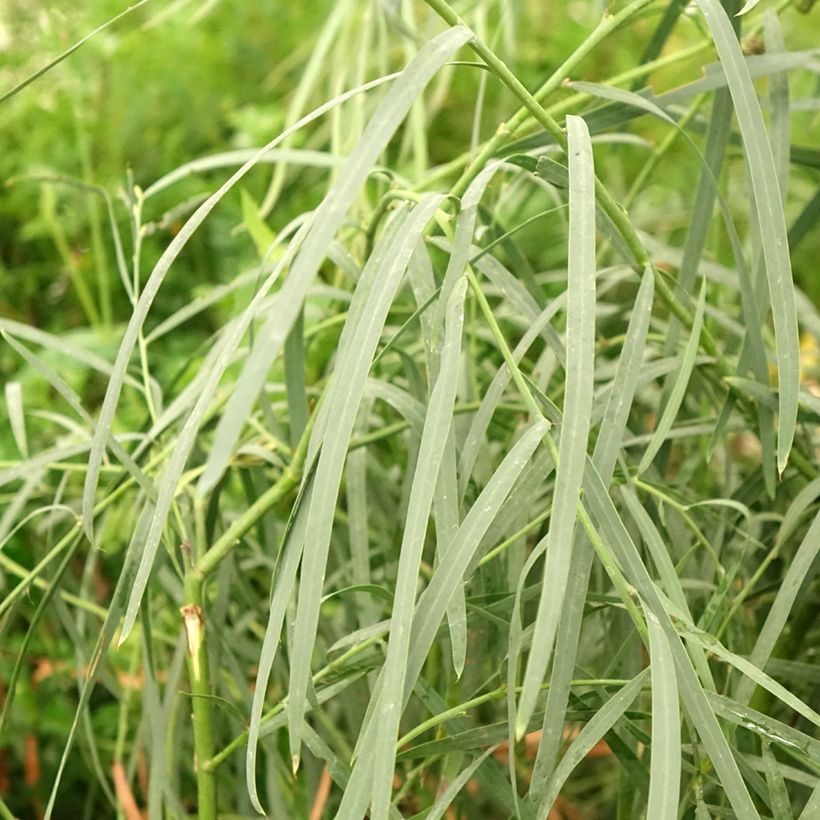



Plant habit
Flowering
Foliage
Botanical data
Acacia
iteaphylla
Fabaceae
Willow Leaf Mimosa
Australia
Other Acacia - Wattle
Planting and care
Plant in spring, in March or April, in a sunny or semi-shaded position sheltered from strong winds. In very mild climates, plant in autumn. It dies below -7°C (19.4°F) if not well protected in winter: surround it with a thick winter cover as a precaution, and ventilate during the day if conditions are mild. A dry soil in autumn and winter slightly increases its resistance to cold. This bush is not demanding on the nature of the soil, which must however be sufficiently draining. Comfortable in acidic soils, it tolerates slightly chalky soils. As it withstands drought once established, watering is not necessary when grown in the open ground. Light pruning is recommended after flowering: shorten the branches that have flowered by about half their length. This operation prevents the formation of pods that unnecessarily exhaust the plant.
Mimosa, in general, is very sensitive to cold; as soon as temperatures approach 0°C (32°F), it is advisable to install a thick mulch at its base to protect the graft and roots, and to use a winter cover.
In the case of pot cultivation, repot in a large container every two years, in spring. Water regularly; the root ball should not dry out completely between two waterings. In cold regions, overwinter in a bright and cool but frost-free room.
The combination of heat and humidity can promote sudden and unexplained wilting of a mimosa that seemed perfectly healthy: in this case, the culprits are either Cylindrocladium, a microscopic fungus that attacks the collar of the plant, which turns black, or Phytophthora, which penetrates through the roots and causes the plant to die within a few days. Mimosas grafted onto Acacia retinodes are highly adapted to summer drought and poor, chalky soils, and do not tolerate constantly moist soil, especially in hot weather.
The other enemies of this mimosa are psyllid (false aphid), frothy-banded cicada (Metcalfa pruinosa), and cottony cushion scale (Icerya purchasi). To limit their development, spray nettle manure or diluted black soap at 5%. A treatment with white oils is also effective. Also, perform a daily thorough inspection of the branches, accompanied by manual removal of the scales (if you have the courage). Alternatively, release Australian ladybirds (Rodolia cardinalis), which are highly effective against cottony cushion scale.
Planting period
Intended location
Care
This item has not been reviewed yet - be the first to leave a review about it.
Evergreen shrubs
Haven't found what you were looking for?
Hardiness is the lowest winter temperature a plant can endure without suffering serious damage or even dying. However, hardiness is affected by location (a sheltered area, such as a patio), protection (winter cover) and soil type (hardiness is improved by well-drained soil).

Photo Sharing Terms & Conditions
In order to encourage gardeners to interact and share their experiences, Promesse de fleurs offers various media enabling content to be uploaded onto its Site - in particular via the ‘Photo sharing’ module.
The User agrees to refrain from:
- Posting any content that is illegal, prejudicial, insulting, racist, inciteful to hatred, revisionist, contrary to public decency, that infringes on privacy or on the privacy rights of third parties, in particular the publicity rights of persons and goods, intellectual property rights, or the right to privacy.
- Submitting content on behalf of a third party;
- Impersonate the identity of a third party and/or publish any personal information about a third party;
In general, the User undertakes to refrain from any unethical behaviour.
All Content (in particular text, comments, files, images, photos, videos, creative works, etc.), which may be subject to property or intellectual property rights, image or other private rights, shall remain the property of the User, subject to the limited rights granted by the terms of the licence granted by Promesse de fleurs as stated below. Users are at liberty to publish or not to publish such Content on the Site, notably via the ‘Photo Sharing’ facility, and accept that this Content shall be made public and freely accessible, notably on the Internet.
Users further acknowledge, undertake to have ,and guarantee that they hold all necessary rights and permissions to publish such material on the Site, in particular with regard to the legislation in force pertaining to any privacy, property, intellectual property, image, or contractual rights, or rights of any other nature. By publishing such Content on the Site, Users acknowledge accepting full liability as publishers of the Content within the meaning of the law, and grant Promesse de fleurs, free of charge, an inclusive, worldwide licence for the said Content for the entire duration of its publication, including all reproduction, representation, up/downloading, displaying, performing, transmission, and storage rights.
Users also grant permission for their name to be linked to the Content and accept that this link may not always be made available.
By engaging in posting material, Users consent to their Content becoming automatically accessible on the Internet, in particular on other sites and/or blogs and/or web pages of the Promesse de fleurs site, including in particular social pages and the Promesse de fleurs catalogue.
Users may secure the removal of entrusted content free of charge by issuing a simple request via our contact form.
The flowering period indicated on our website applies to countries and regions located in USDA zone 8 (France, the United Kingdom, Ireland, the Netherlands, etc.)
It will vary according to where you live:
- In zones 9 to 10 (Italy, Spain, Greece, etc.), flowering will occur about 2 to 4 weeks earlier.
- In zones 6 to 7 (Germany, Poland, Slovenia, and lower mountainous regions), flowering will be delayed by 2 to 3 weeks.
- In zone 5 (Central Europe, Scandinavia), blooming will be delayed by 3 to 5 weeks.
In temperate climates, pruning of spring-flowering shrubs (forsythia, spireas, etc.) should be done just after flowering.
Pruning of summer-flowering shrubs (Indian Lilac, Perovskia, etc.) can be done in winter or spring.
In cold regions as well as with frost-sensitive plants, avoid pruning too early when severe frosts may still occur.
The planting period indicated on our website applies to countries and regions located in USDA zone 8 (France, United Kingdom, Ireland, Netherlands).
It will vary according to where you live:
- In Mediterranean zones (Marseille, Madrid, Milan, etc.), autumn and winter are the best planting periods.
- In continental zones (Strasbourg, Munich, Vienna, etc.), delay planting by 2 to 3 weeks in spring and bring it forward by 2 to 4 weeks in autumn.
- In mountainous regions (the Alps, Pyrenees, Carpathians, etc.), it is best to plant in late spring (May-June) or late summer (August-September).
The harvesting period indicated on our website applies to countries and regions in USDA zone 8 (France, England, Ireland, the Netherlands).
In colder areas (Scandinavia, Poland, Austria...) fruit and vegetable harvests are likely to be delayed by 3-4 weeks.
In warmer areas (Italy, Spain, Greece, etc.), harvesting will probably take place earlier, depending on weather conditions.
The sowing periods indicated on our website apply to countries and regions within USDA Zone 8 (France, UK, Ireland, Netherlands).
In colder areas (Scandinavia, Poland, Austria...), delay any outdoor sowing by 3-4 weeks, or sow under glass.
In warmer climes (Italy, Spain, Greece, etc.), bring outdoor sowing forward by a few weeks.

































